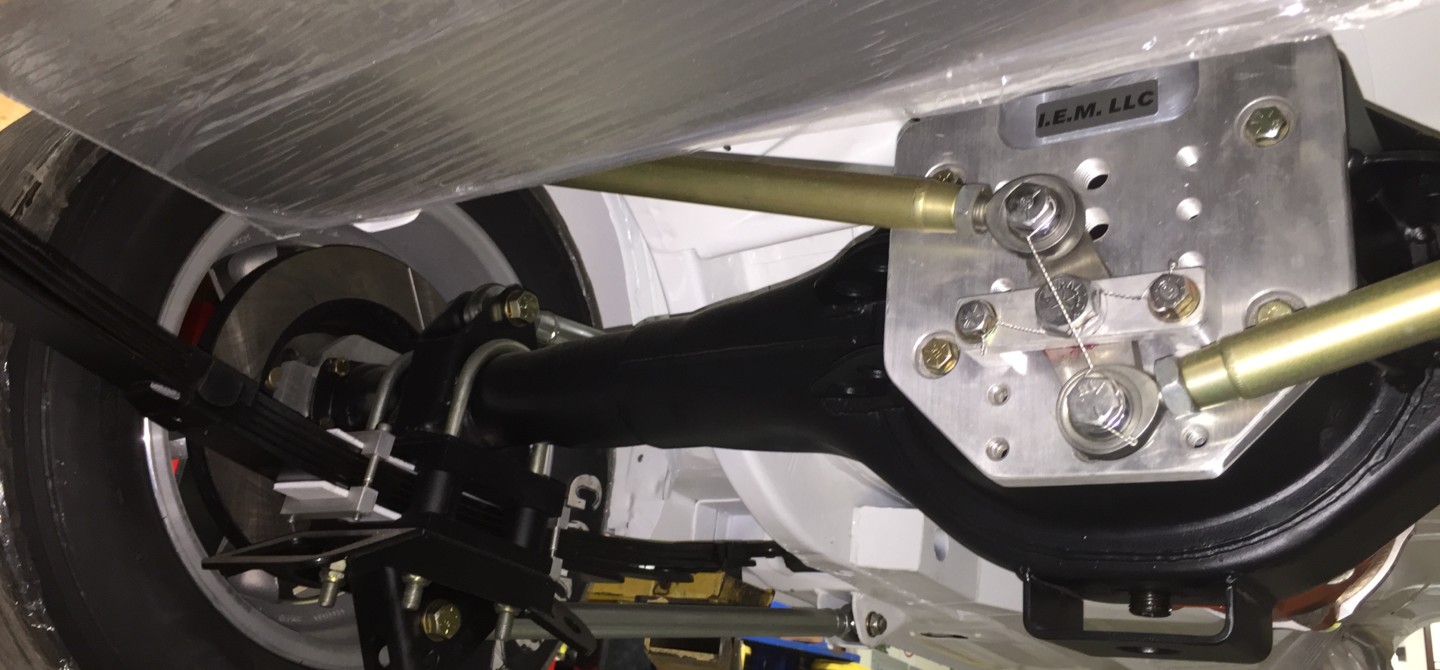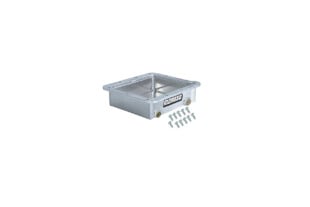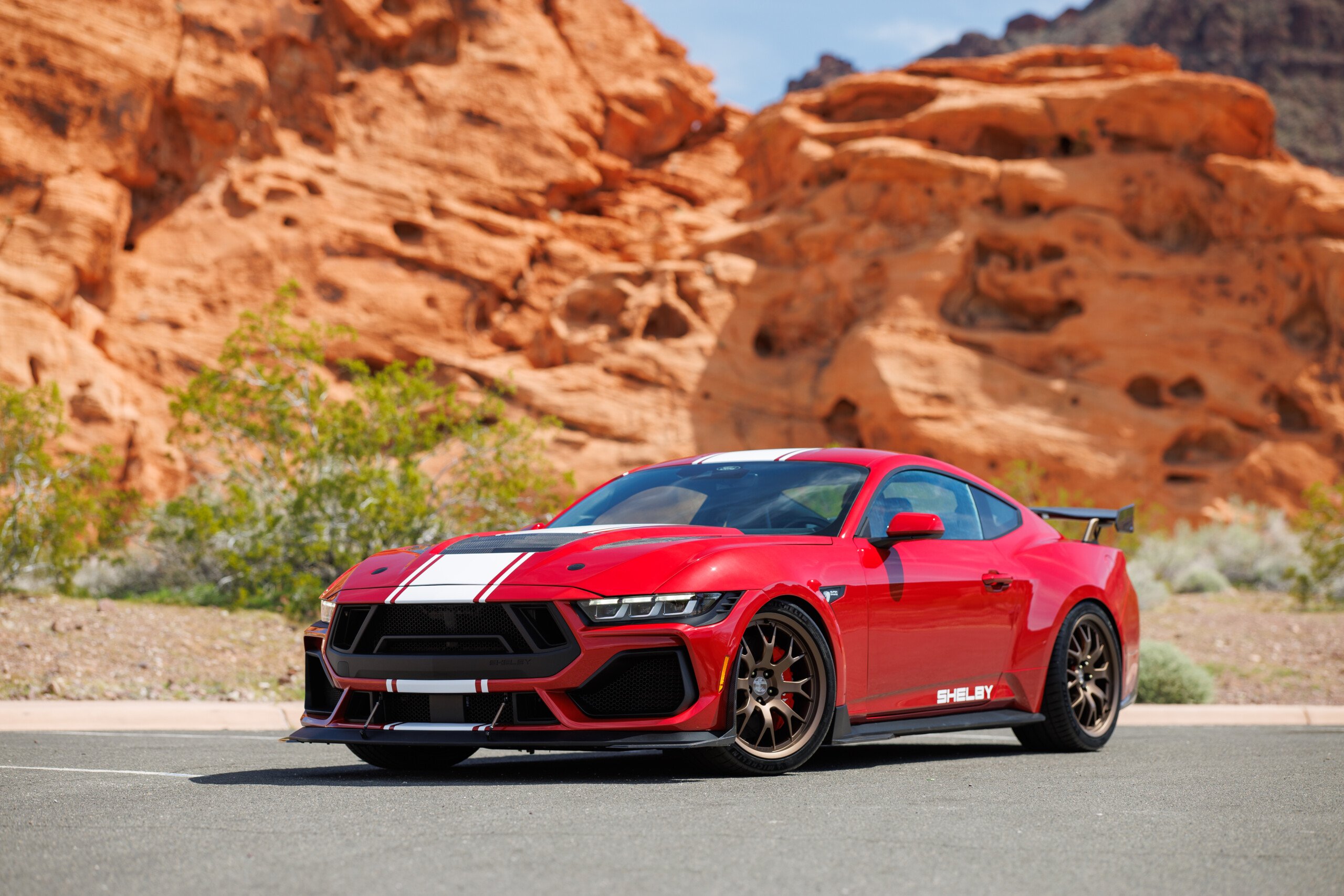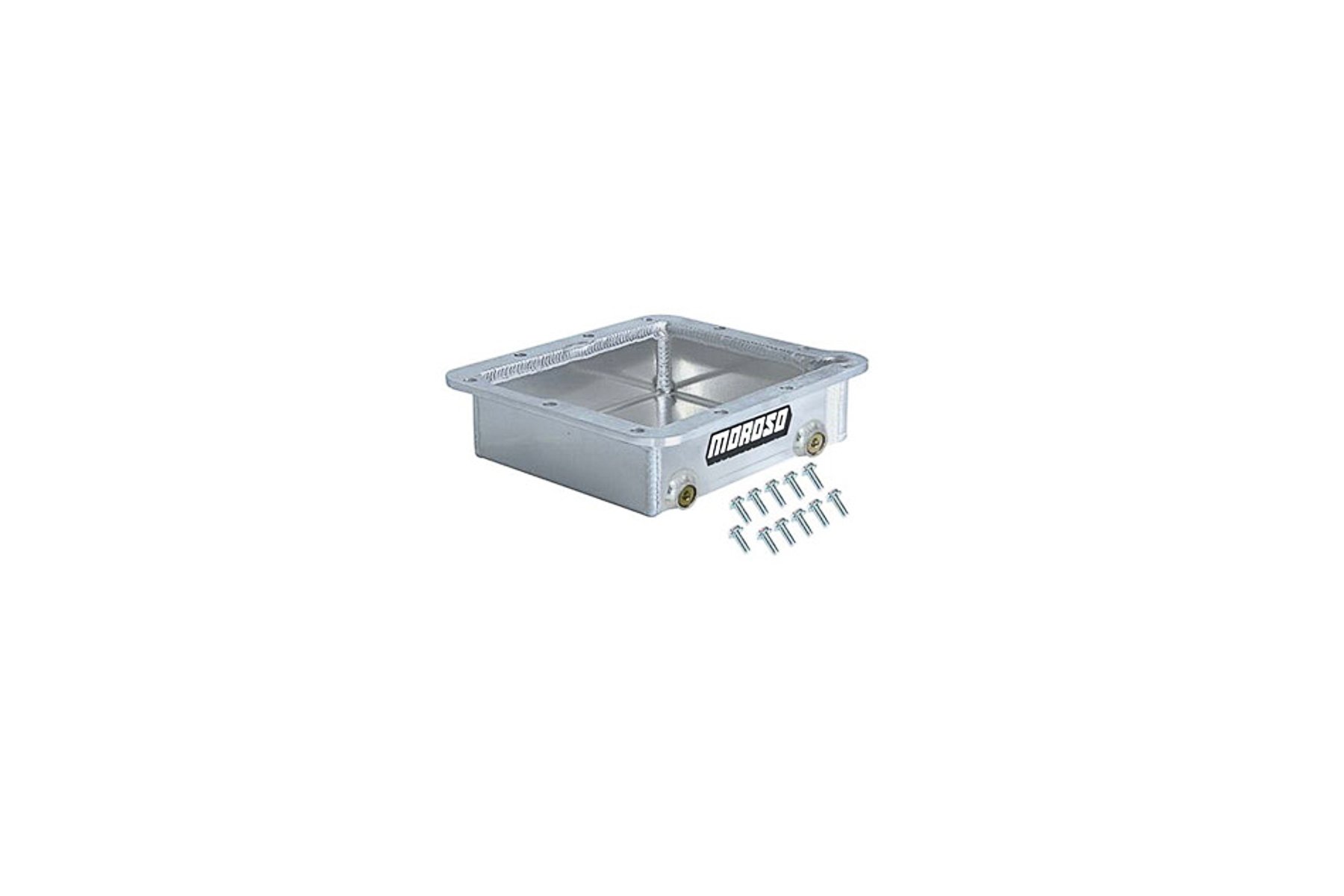Despite the onslaught of front-wheel drive vehicles, some current and many classic two-wheel drive performance cars and trucks deliver power through a solid rear axle suspension. In this configuration, the ring-and-pinion, differential, and axles, brakes, wheels, and tires are all components of the rear suspension, as their weight is supported by the springs. As the axle shafts turn, it’s sometimes referred to as a live rear axle. Conversely, a front upright is an example of a dead axle, where the wheels turn around the fixed spindle.
The axle assembly is attached, or ‘located’ to the chassis by various methods, traditionally by leaf spring as still seen on many pickup trucks. However, the most common method of attaching the rear axle assembly in modern cars is through the use of suspension links. These links control the axle’s movement in fore-and-aft and lateral movement relative to the chassis. The springs and dampers control the axle’s vertical movement. The geometry of these suspension links define the car’s rear suspension behavior and overall handling characteristics.
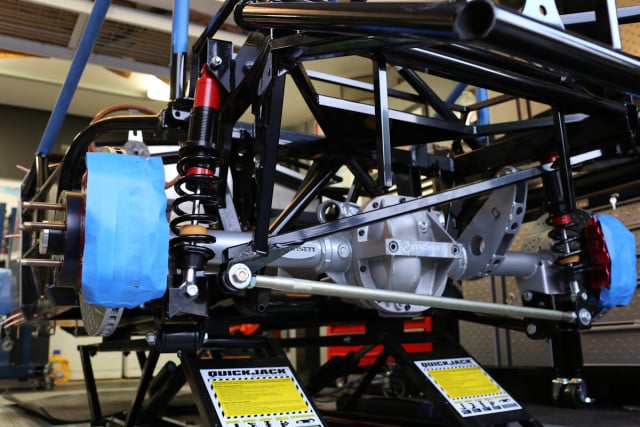
The fore-and-aft suspension links (often called control arms) affect the rear axle’s behavior under acceleration and braking, while the lateral suspension links dictate the axle’s behavior around corners.
Lateral Location Methods
The two most common methods to control, or locate, the rear axle during cornering are a Panhard bar and a Watt’s link.
The Panhard bar, named after the early 20th century French car company, is a single link attached between the chassis and the axle assembly. (See Fig. 1, below). As viewed from the rear of the car, the rear axle moves up and down along the arc of the Panhard bar’s radius. So, as the rear axle moves up and down, it also moves slightly left or right. A Panhard bar that is long and parallel to the ground minimizes this behavior.
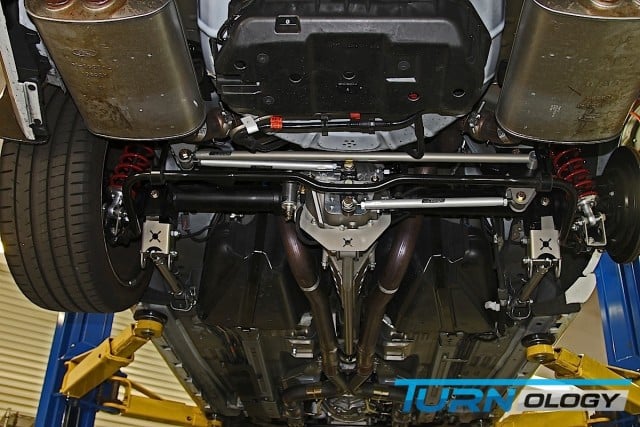
James Watt invented the Watt’s Link in 1784. It consists of two links of equal length, and a central “bell crank” that pivots in the middle. The pivot moves in a relatively straight line, regardless of the length of the links.
Roll Centers
The roll center of a suspension is the point around which the chassis rotates relative to the tires. (The front and rear roll centers of a car’s suspension define the roll axis.) The roll center describes how the cornering forces are divided up between the tires. Generally speaking, a lowering the rear roll center moves the chassis balance toward understeer, while raising the rear roll center moves the handling balance toward oversteer.
The roll center height of a Panhard bar rear suspension is located at the link’s mid-point. As the rear axle moves, the rear roll center moves half as far. The Panhard bar can be attached to the chassis on either the left or right side. In theory, the side of the chassis to which the Panhard bar is attached can affect the way the car handles in left or right turns. This can be helpful when designing a Panhard bar suspension on an oval track car.
Watt’s Link Design
The roll center height of a Watt’s link is at the center pivot. When designing a Watt’s link, the “bell crank” can either be located on the chassis or the axle. The design defines how the roll center moves when the suspension is active. It should be noted that despite a common misconception, the Watt’s link travels not straight up and down, but in a slender S pattern. If it weren’t for this motion, the linkage would bind and be of no value.
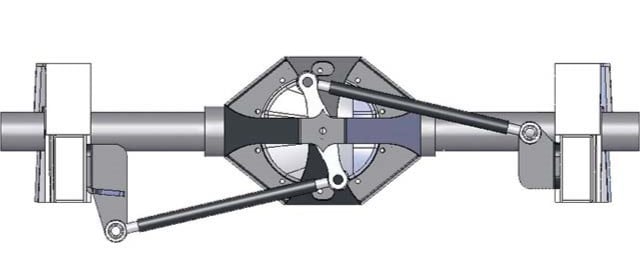
This illustration is an example of a properly-designed Watt’s linkage that’s mounted to the rear axle itself.
If the bell crank is located on the axle, the roll center height relative to the contact patch of the tires is constant. If the bell crank is located on the chassis, the distance between the roll center and the chassis’ center of gravity is constant.
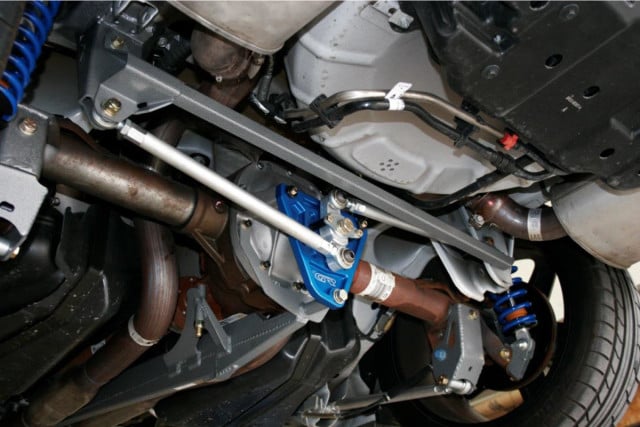
Watt’s link installation for a 2005-2014 Mustang. Note the bell crank is attached to the differential cover, and the links attach to the chassis. There are many variations on Watt’s link installations, including mounting the bell crank on the chassis, and even mounting the bell crank “flat” to the ground either on the chassis or under the differential.
In this author’s view, a chassis-mounted bell crank will move the handling balance toward understeer while exiting corners. As the chassis squats under power, the rear roll center move lower relative to the car’s center of gravity. More understeer could be an advantage on high-horsepower cars with stiff springs that struggle for rear grip while powering out of corners. However, ground clearance can be an issue for chassis-mounted bell cranks. As the chassis squats under acceleration, the bell crank can hit the ground.

An animation of a Watt’s Link as it travels through the rear axle’s range of motion. Notice that the linkages trace a slightly S-shaped pattern through its movement.
Conversely, an axle-mounted bell crank will move the handling balance toward oversteer while exiting corners. As the chassis squats under power, the rear roll center will move higher relative to the car’s center of gravity. This could help lower-powered cars with soft rear springs understeer less out of corners. However, mounting the bell crank to the axle can increase unsprung weight, as the bell crank, the bell crank mount, and half of the weight of the links can add up to several pounds of extra heft. Higher unsprung weight can require additional compression damping to keep the rear tires from “skipping” over bumps.
Panhard Bar Design
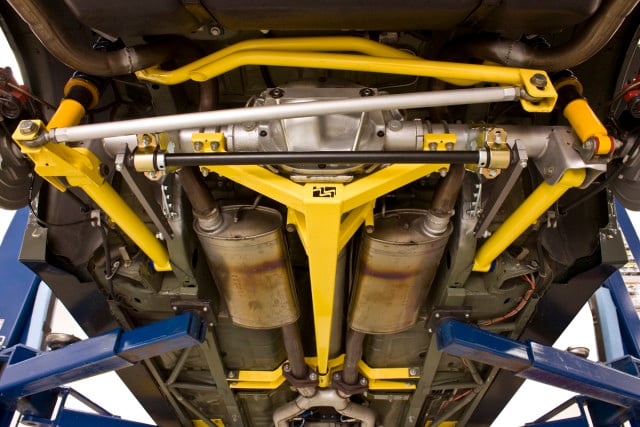
Panhard Bar installation on a 1979-2004 Mustang; note that bar is attached to the chassis on the right side, and the axle on the left.
Since a Panhard bar’s roll center moves half as far as the axle, its handling behavior could be viewed as a compromise between the two Watt’s linkage mounting options. Whatever the mounting method, if one wants the car to behave similarly in left and right-hand corners, the Panhard bar should be as long as possible and mounted parallel to the ground.
Adjustment
With a Watt’s linkage, the roll center (and thus, handling balance) is adjusted by moving the bell crank pivot either up or down. Moving either end of a Panhard bar adjusts its roll center, though it’s best to adjust both the same amount to keep the Panhard bar parallel to the ground. You can also create an adjustable Watt’s link set-up (see our lead photo) so that it can provide adjustment to fine-tune handling at the track.
What’s Better?
Readers will probably be wondering by now, “So, what’s better, a Panhard bar, or a Watt’s link?” Like many things, the answer is, “that depends.” Proponents of the Watt’s link claim that because the roll center moves in a relatively vertical line relative to the chassis, that handling characteristics are identical in left or right corners. Others claim a Panhard bar is superior because it’s light and simple.
There are merits to both arguments. In a vehicle with lots of suspension travel (like stock cars and off-road trucks) there will be bigger differences between the handling characteristics of a Panhard bar and a Watt’s link. A Watt’s link is more impressive in the paddock, and in theory, provides more consistent handling behavior on road courses. But in a car with just a few inches of suspension travel, this author believes that if the Panhard bar is long and remains roughly parallel to the ground, the differences in handling between a Panhard bar and a Watt’s link can be minimized.
Now, if you really want to make your head hurt: on oval track cars, the Panhard bar’s (or “track bar’s,”) asymmetric behavior can be used as an advantage to help an oval track car grip better in left-hand turns, as the car’s behavior in right-hand turns is irrelevant. The possibilities for tuning an oval track car with a “track bar” are head-spinning…


